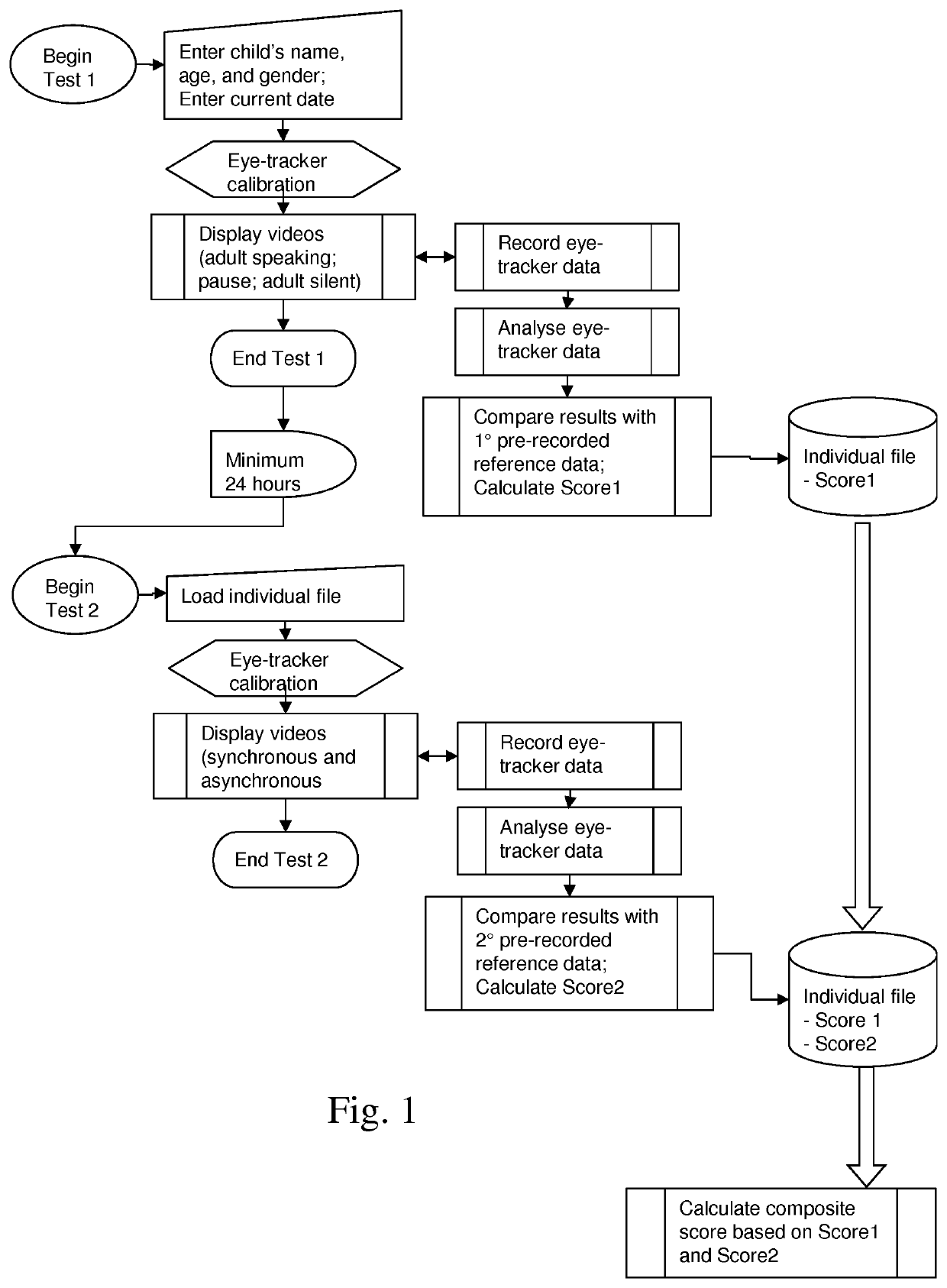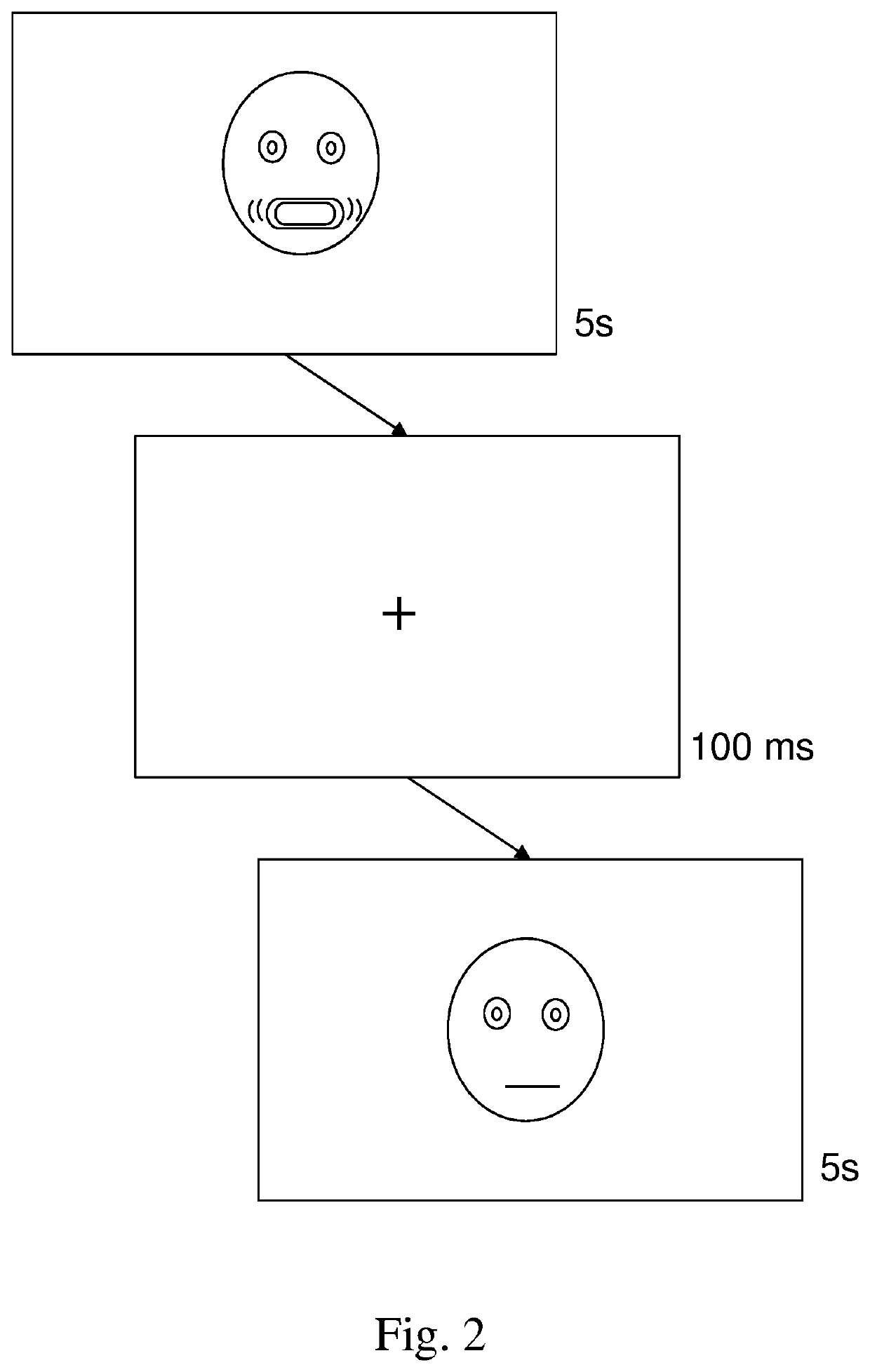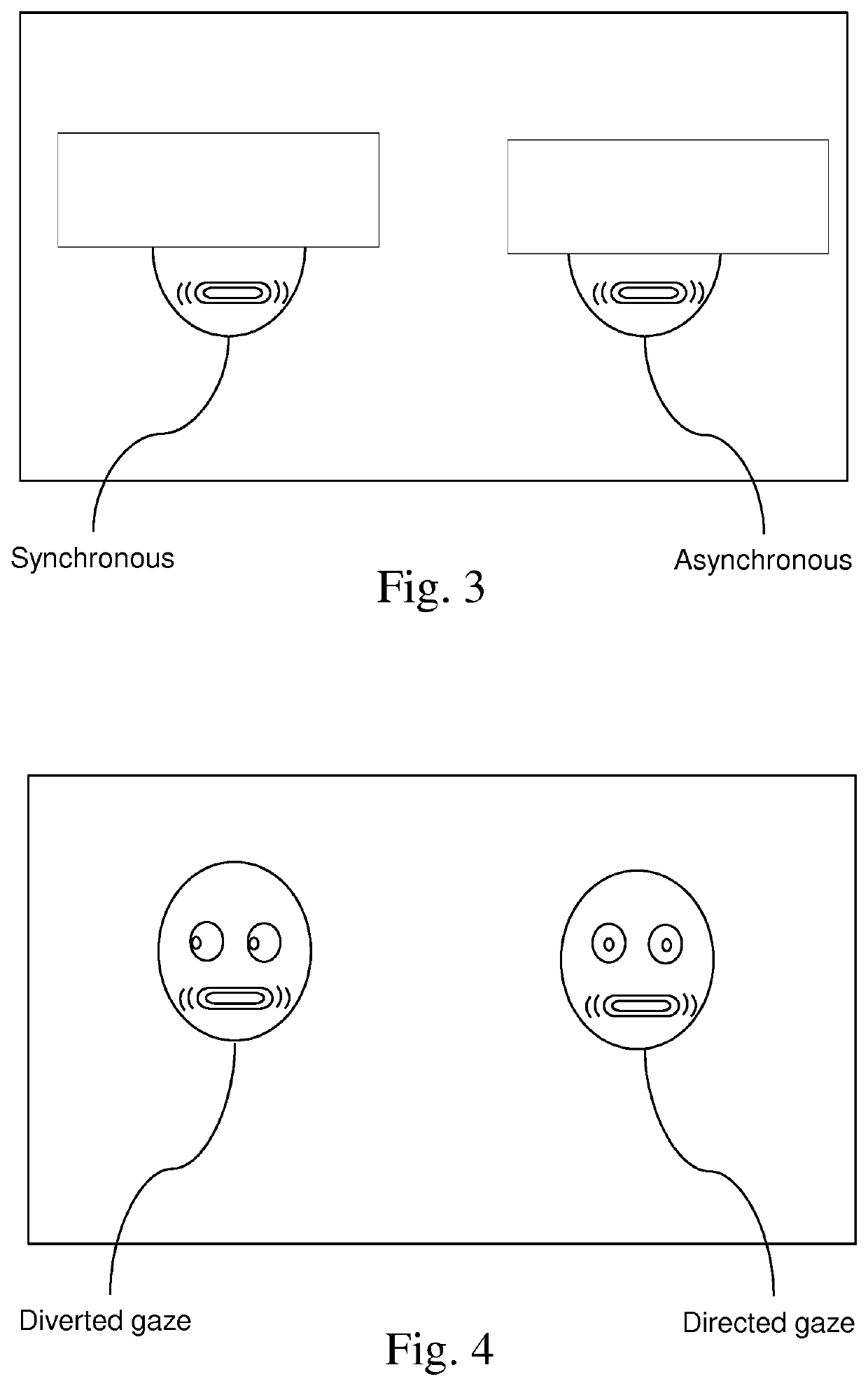Method for evaluating a risk of neurodevelopmental disorder with a child
a risk and neurodevelopmental disorder technology, applied in the field of neurodevelopmental disorder risk evaluation methods and devices, can solve the problems of significant differences and enough to allow the establishment of individual thresholds, and achieve the effect of less false positive results, less false negative results, and more accurate results for individuals
- Summary
- Abstract
- Description
- Claims
- Application Information
AI Technical Summary
Benefits of technology
Problems solved by technology
Method used
Image
Examples
Embodiment Construction
[0055]According to the invention, there is provided a method for evaluating a risk of neurodevelopmental disorder with a child.
[0056]The method first comprises the step of providing a machine comprising a display screen (5), an eye-tracking device (10), a controller (15) configured for displaying information on the display screen (5) and for reading and recording eye position data from the eye-tracking device (10).
[0057]The machine may for example be a portable personal computer or a tablet computer to which an eye tracking device is connected. Various commercially available eye tracking devices may be used, such as for example an Eye Tracker 4C model from Tobii Technology or a RED-m from SensoMotoric Instruments or a RK-464 model from ISCAN Inc. or an TM5 Mini from EyeTech. These eye-tracking devices come with appropriate control software which, once installed and run, enable the controller (15) (which is generally the computer itself) to read and record eye position data from the ...
PUM
 Login to View More
Login to View More Abstract
Description
Claims
Application Information
 Login to View More
Login to View More - R&D
- Intellectual Property
- Life Sciences
- Materials
- Tech Scout
- Unparalleled Data Quality
- Higher Quality Content
- 60% Fewer Hallucinations
Browse by: Latest US Patents, China's latest patents, Technical Efficacy Thesaurus, Application Domain, Technology Topic, Popular Technical Reports.
© 2025 PatSnap. All rights reserved.Legal|Privacy policy|Modern Slavery Act Transparency Statement|Sitemap|About US| Contact US: help@patsnap.com



